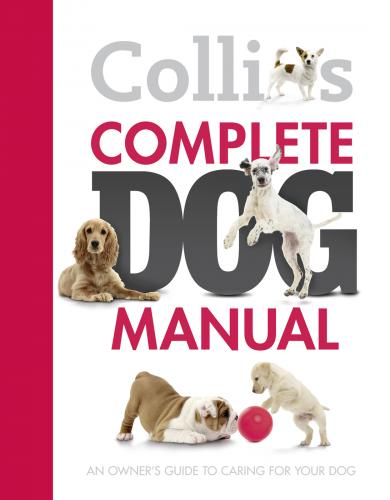A superb athletic body rippling with muscles, of medium size with a short, glossy coat in fawn shades from light to deep red, or distinct brindle stripes. White is allowed but not exceeding one-third of the base colour. Once over the puppy stages, Boxers are easily trained for all manner of security work. The breed is used in Europe as a police dog where its muscular, hard body can stop a criminal in his tracks. Armed forces make use of its determination and confident attitude.
Fact File
Group: Working
Country of Origin: Germany
Male:
56–63 cm (22½–25 in)
Female:
Slightly smaller.
Coat: Short, dense coat that can withstand the cold and wet.
Life Expectancy: 9–10 years
Guarding Instinct: Distrustful, all sizes will warn off strangers.
Temperament & Grooming
Temperament: The Boxer can be boisterous and exuberant and should be trained kindly not to jump up on children, whom it loves. Its aggressive appearance often warns off wrong-doers, but this dog is not a biter and its formidable looks belie its soft nature.
Grooming: Minimal: a weekly brushing will remove dead hairs, then polish with a chamois leather or hound glove.
Exercise & Feeding
Exercise: Natural athletes, Boxers need plenty of activity, free running and play.
Feeding: There are no special feeding requirements.
Health Problems
Some hip dysplasia but serious heart problems. Buy from reputable breeders who test their stock. Some deafness in white dogs.
Schnauzer
(Eric Isselee)
Absolutely devoted to its family, the Schnauzer is a happy dog that can be trained fairly easily to be obedient. The original Pinscher was an all-round farm dog that did anything that was expected of him. The modern Schnauzer is usually a much-loved family pet and does not generally have work to do. Even so, it still retains the will and the ability.
History
This friendly, muscular dog was almost certainly derived from the ancient Wire-haired Pinscher to which it bears a startling resemblance, as can be seen in a picture by Albrecht Dürer (1492). A fourteenth-century statue of a hunter in Mecklenburg, Germany, has a similar-looking dog crouched at his feet. This old breed was once a general farm dog. It was used to accompany stagecoaches in order to defend them against robbers who worked the forests, and thus it became known as the ‘Carriage Griffon’.
Description
A chunky, medium-sized muscular dog, its coat is black or pepper and salt (greyish) in colour. The outer coat is wiry, harsh to the touch and is distinguished by a beard and bushy eyebrows; the undercoat is dense. A good all-round family pet. Although this dog may look fierce and is very protective of its family, it has a very friendly nature.
Fact File
Group: Working
Country of Origin: Germany
Male:
48 cm (19 in)
Female:
46 cm (18 in)
Coat: Dense, wiry coat; dense undercoat.
Life Expectancy: 12–14 years
Guarding Instinct: Suspicious, so prowlers beware.
Temperament & Grooming
Temperament: Courageous and assertive, it is a friendly dog and needs strong but kind handling.
Grooming: Needs hand-stripping four times a year, and the leg and face furnishings should be combed out twice a week.
Exercise & Feeding
Exercise: All Schnauzers require frequent running exercise and play to maintain their athleticism and mental health. They are also the natural friends of horses.
Feeding: There are no special feeding requirements.
Health Problems
None. This is generally a very healthy, hardy breed.
Siberian Husky
(otsphoto)
Kind, gentle and very affectionate, in the land of their origin the Husky is a much-cherished working dog and was used for hauling sleds laden with meat and fish. Their tremendous strength and stamina allow them to make some phenomenally long journeys. An excellent companion for energetic families.
History
Husky sled dogs were the only means of transport in Alaska during the gold rush of 1900. Dog team drivers developed rivalries and started to stage races. In 1920, a team of twenty Siberians pulled a sled for 340 miles carrying vaccines to the diphtheria-stricken city of Nome, saving the population. A statue of a sled dog in Central Park, New York, celebrates that achievement. Because the breed have lived closely, probably for thousands of years, with the Chukchi nation, they are ‘people orientated’.
Description
The medium-sized Husky looks very alert and is lithe with grace. It has an abundant weatherproof coat with a thick, soft undercoat. The breed comes in a variety of colours; the facial colours can be contrasting, unusual and striking. Elegant and athletic, the Siberian Husky does not bark but howls and talks. Today, in the West, they are usually companion dogs, although the sport of sled dog racing is growing rapidly.
Fact File
Group: Working
Country of Origin: Siberia
Male: 53–60 cm (21–23½ in)
Female:
Slightly smaller.
Coat: These dogs moult freely and have a double coat.
Life Expectancy: 12–15 years
Guarding Instinct: Not a guard dog, too easy-going.
Temperament & Grooming
Temperament: The Siberian Husky is gentle, friendly and people-loving, intelligent and biddable. Easy-going, easy to train and anxious to please, it’s a pack dog that understands its family, particularly the children.
Grooming: Twice-weekly deep
